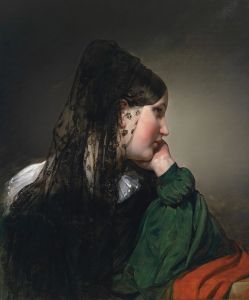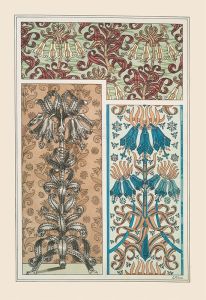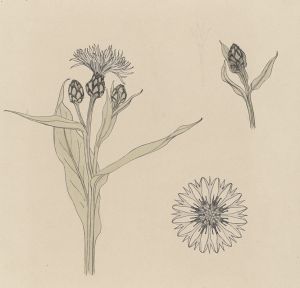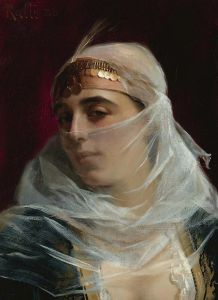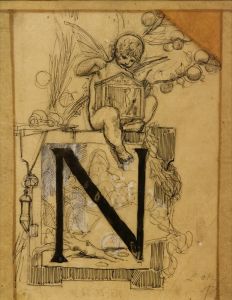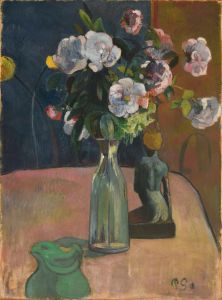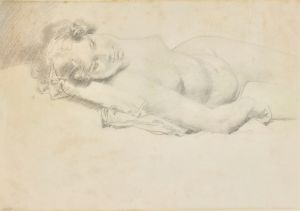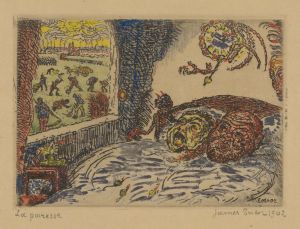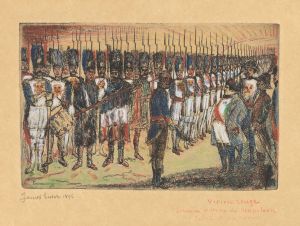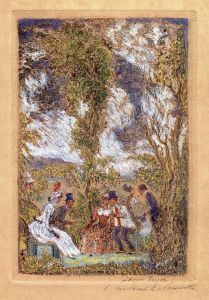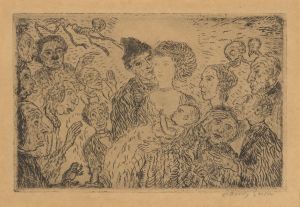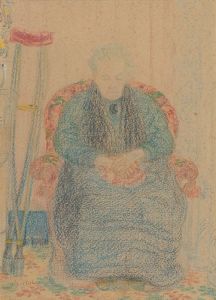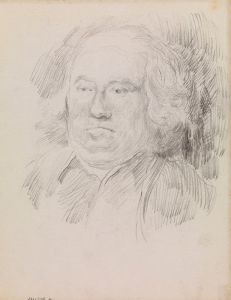
Portrait de jeune femme
A hand-painted replica of James Ensor’s masterpiece Portrait de jeune femme, meticulously crafted by professional artists to capture the true essence of the original. Each piece is created with museum-quality canvas and rare mineral pigments, carefully painted by experienced artists with delicate brushstrokes and rich, layered colors to perfectly recreate the texture of the original artwork. Unlike machine-printed reproductions, this hand-painted version brings the painting to life, infused with the artist’s emotions and skill in every stroke. Whether for personal collection or home decoration, it instantly elevates the artistic atmosphere of any space.
James Ensor, a prominent Belgian painter and printmaker, is known for his unique and often avant-garde style that contributed significantly to the development of Expressionism and Surrealism. Among his works, "Portrait de jeune femme" stands out as a testament to his distinctive approach to portraiture and his ability to capture the essence of his subjects.
"Portrait de jeune femme" is a painting that reflects Ensor's fascination with the human face and his skill in portraying emotion and character. Although specific details about the painting's creation, such as the exact date and the identity of the woman depicted, are not widely documented, the work is consistent with Ensor's broader oeuvre, which often features vivid colors, expressive brushwork, and a keen interest in the psychological aspects of his subjects.
Ensor was born in Ostend, Belgium, in 1860, and he spent much of his life there. His early exposure to the eclectic mix of objects in his family's curiosity shop, along with the vibrant cultural environment of Ostend, greatly influenced his artistic development. Ensor's work often includes elements of satire, fantasy, and the grotesque, reflecting his critical view of society and the human condition.
In "Portrait de jeune femme," Ensor employs his characteristic use of color and texture to bring the subject to life. The painting likely features a young woman rendered with a sense of immediacy and intimacy, capturing her personality and mood. Ensor's technique often involves bold, loose brushstrokes and a vivid palette, which can be seen in the way he handles the skin tones and background elements in his portraits.
Ensor's portraits, including "Portrait de jeune femme," are notable for their psychological depth and the way they convey the inner life of the subject. This focus on the emotional and psychological aspects of portraiture was somewhat ahead of its time, prefiguring later developments in modern art. Ensor's ability to blend realism with elements of fantasy and emotion makes his portraits particularly compelling.
Throughout his career, Ensor was associated with the avant-garde group Les XX (The Twenty), which included other progressive artists of the time. This group was instrumental in challenging the conservative art establishment in Belgium and promoting new artistic ideas. Ensor's work, including his portraits, played a significant role in this movement, helping to pave the way for future generations of artists.
"Portrait de jeune femme" exemplifies Ensor's innovative approach to art and his ability to capture the complexity of human emotion. While specific details about the painting may be scarce, its significance lies in its representation of Ensor's broader artistic vision and his contribution to the evolution of modern art. Through works like this, Ensor remains an influential figure in the history of art, celebrated for his originality and his profound impact on the trajectory of 20th-century painting.





